
 |
 Most viewed - Star Clusters Most viewed - Star Clusters |
 |
|
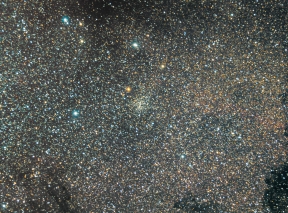
Messier 24 - "Small" Sagittarius Star Cloud487 viewsMessier 24 is an enormous cloud of stars lying in the Sagittarius arm of our galaxy, at a distance of about 10,000 light years from Earth. It is about 600 light years wide and occupies an area 90 arc minutes in apparent diameter. Among other objects, M24 contains the open cluster NGC 6603, which is at the center of this image. M24 is called the Small Sagittarius Star Cloud because there is another, larger star cloud south of it in Sagittarius, consisting of stars not obscured by the interstellar dust which blocks our view of the center of the galaxy.
|
|
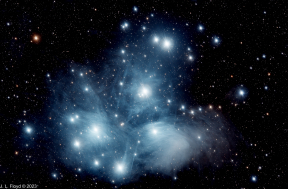
M45 - The Pleiades471 viewsOpen star cluster in the constellation Taurus. Nearest Messier object to Earth (444 light-years).
|
|
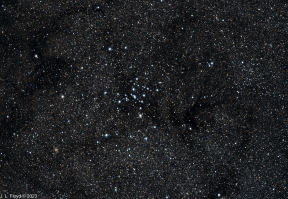
Messier 7 - Ptolemy's Cluster468 viewsAn open cluster of stars in the constellation Scorpius. Southernmost Messier object. 980 light years distant. Also designated NGC 6475.
|
|
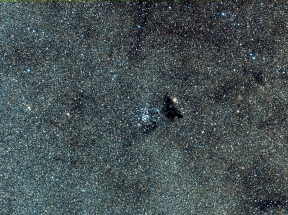
NGC 6520 and Barnard 86463 viewsNGC 6520 is an open cluster in the constellation Sagittarius, consisting of about 25 stars of magnitude 9-12. At its western edge (to the right in this image) lies the dark nebula Barnard 86 (B86).
|
|
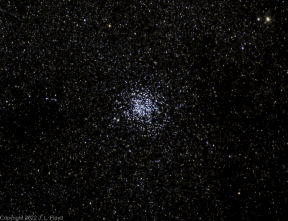
M11 - The Wild Duck Cluster458 viewsOne of the richest, most compact and most massive open clusters known; estimates range from 3,700 to 11,000 solar masses. Radius 95 light-years. 6,120 light-years away, in the constellation Scutum. Supposedly the cluster resembles a flying flock of ducks, although as far as I can tell it could just as well be geese, crows or magpies.
|
|
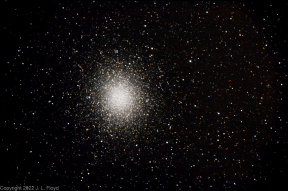
NGC 5139 - Omega Centauri Cluster455 viewsGlobular cluster in Centaurus, 17,090 light-years away. The largest-known globular cluster in the Milky Way, estimated to contain approximately 10 million stars, and a total mass equivalent to 4 million solar masses.
|
|
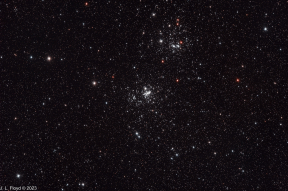
NGC869 and NGC884 - The Double Cluster in Perseus450 viewsOpen clusters - NGC869 is center/bottom, 7460 light-years away; NGC884, top, 7640 light-years away
|
|
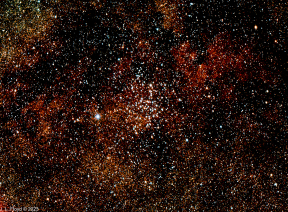
M23 - Open Cluster in Sagittarius437 viewsIn front of an extensive gas and dust network. Around 300 million years old and 2050 light-years away.
|
|
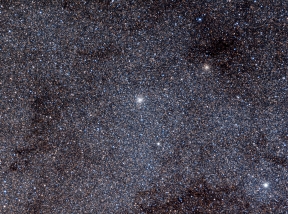
NGC 6522 - Globular Cluster in Sagittarius435 viewsPossibly the oldest star cluster in the Milky Way,[4] with an age of more than 12 billion years. Located in an area of the sky known as Baade's Window, named for the astronomer Walter Baade, who first recognized its signficance. Baade's Window is an area of the sky with relatively low amounts of interstellar dust along the line of sight from the Earth, allowing unobstructed observation of the center of our Milky Way galaxy.
|
|
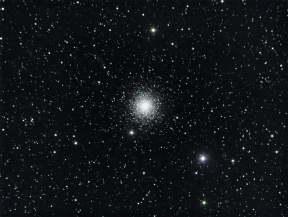
M15 - Globular cluster in Pegasus430 viewsContaining over 100,000 stars, 175 light-years in diameter, 33,600 light years from Earth. This is one of the oldest (12 billion years) and most densely packed globulars in the Milky Way.
|
|
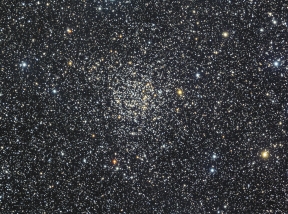
NGC 7789 - Open Cluster in Cassiopeia427 viewsDiscovered by Caroline Herschel in 1783 and nicknamed "Caroline's Rose" because of its supposed floral appearance. Distance from Earth is about 7,600 light-years.
|
|
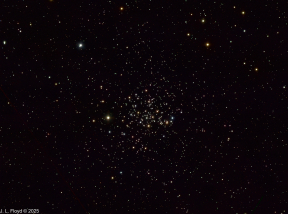
Messier 67 - Open cluster in Cancer415 viewsSometimes called King Cobra or Golden Eye Cluster. Distance 2600-2900 light-years. Estimated age 3.2 to 5 billion years.
|
|
|
|

|